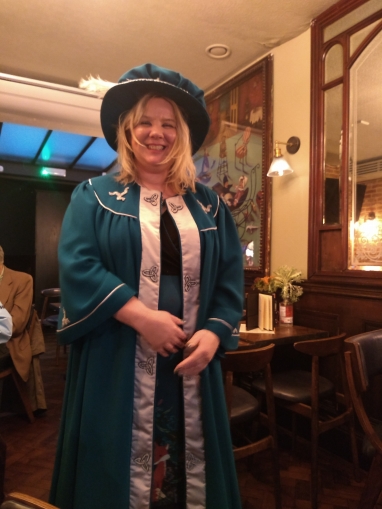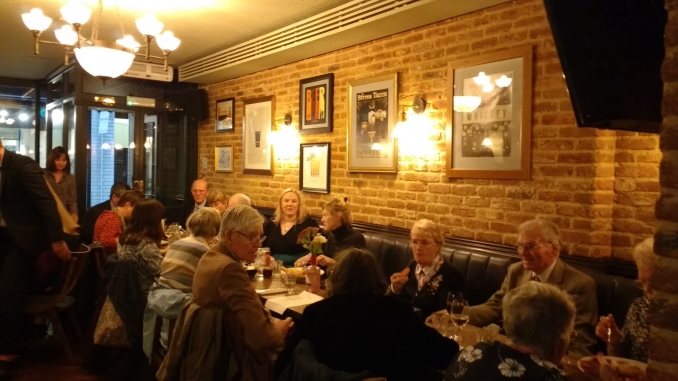Manx Bard special guest at London Manx Society Mhelliah
London Manx Society (Manx: Yn Cheshaght Manninagh Lunnin) held their Mhelliah Service at St Bride's Church in London's Fleet Street on Monday 14th October. This was followed by a celebration lunch in the nearby Punch Tavern in Fleet Street. The Society was thrilled to be joined by the Manx Bard Zoë Cannell who had travelled from the Island and presented two poems, one of which was the first time it had been heard in public. The Mhelliah (Yn Mheillea) is a traditional Celtic harvest festival that remains popular on the Isle of Man (Mannin), and is celebrated annually by London Manx Society. In his novel 'The Manxman', a 1894 novel by the Manx writer Hall Caine (14 May 1853 – 31 August 1931), he describes the Mhelliah festival:
"On the day when the last of the harvest is saved in the Isle of Man, the farmer gives a supper to his farm people and to the neighbours who have helped him to cut and house it. This supper, attended by simple and beautiful ceremonies, is called the Mhelliah."
The London Manx Society was formed in 1895 as an idea by Mr J.J.Cowin, the son of a well-known draper in Douglas . On the 28th of November that year, the inaugural meeting was held in the vestry of St.Martin’s-in-the-Fields, Trafalgar Square, London, with Deemster S Stevenson Moore as its first President. Since then, the Society has met regularly keeping alive its long tradition of providing a focal point for Manx people, and those with Manx connections, who live in and work in the London area and the south-east of England. London Manx Society President Alastair Kneale said: 'we aim to bring together those of all backgrounds with Manx connections, interests, or love of the Isle of Man and contact information about the Society can be seen on our website www.londonmanxsociety.co.uk .'
London Manx Society also have a long association with St Bride's Church in London’s Fleet Street, where the annual Mhelliah Service is held. St. Bride's is one of the oldest churches in London. It is traditionally thought to have been founded by St Bridget of Ireland in the sixth century or in her name by Celtic monks. Remnants of the first church on the site are said to have significant similarities to a church dedicated to St Bridget of the same date in Kildare, Ireland. The present church is thought to be the seventh church to have stood on the site. The most recent having been designed by Sir Christopher Wren in 1672.








